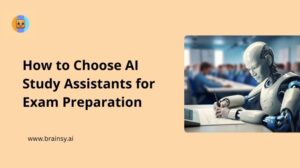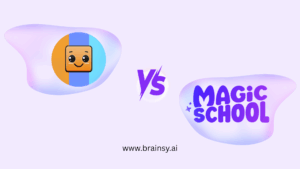Assessment methods for educators are indispensable tools for gauging students’ educational outcomes, reflecting on teaching efficacy, and shaping curriculum design. These strategies include a diverse array of types of assessment, from diagnostic evaluations of students’ baseline abilities to comprehensive reviews of their educational journey.
Our exploration delves into a range of assessments, highlighting the distinctions between formative and summative assessment methods, and examining cutting-edge approaches in crafting assessments. Educators seeking research-backed methods on crafting assessments that cater to diverse learning styles, including those of students with ADHD, will discover actionable advice in this discussion.
Understanding Different Types of Assessments Methods
Assessment methodologies are essential for collecting insights about educational processes, forming the bedrock for appraising student advancement and shaping teaching tactics. To adeptly chart and bolster student learning, teachers utilize an assortment of assessment method options, each with its distinct role and utility in the educational setting.
-
- Technology-Enhanced Assessments:
-
- The integration of advanced technologies such as augmented reality (AR), virtual reality (VR), and mixed reality (MR) into educational assessments opens up new interactive and immersive ways for students to demonstrate their understanding.
-
- Students can showcase their educational progress through tools like ePortfolios and multimedia projects, which enable them to curate and present their learning journeys while fostering critical thinking and reflective skills.
By incorporating innovative techniques into the assessment process, educators not only rejuvenate this critical educational phase but also ensure it remains an integral, dynamic component of the learning journey, in line with contemporary educational objectives.
- Students can showcase their educational progress through tools like ePortfolios and multimedia projects, which enable them to curate and present their learning journeys while fostering critical thinking and reflective skills.
-
- Technology-Enhanced Assessments:
Creating Effective Assessments Methods
Creating effective assessments is a complex endeavor that demands thoughtful consideration and strategic planning. Here are some essential points to bear in mind to ensure the success of this process.
Alignment with Objectives and Standards:
It’s crucial to ensure that technology-based assessments are in sync with the established learning objectives, outcomes, and standards. This strategic alignment is essential as it ensures that the technology-based assessments are accurately measuring the intended competencies.
In the selection of technology tools or platforms for assessments, it’s important to prioritize the appropriate assessment method that aligns with the assessment’s purpose and the educational context to ensure relevance and effectiveness.
Design and Implementation
To eliminate ambiguity and promote uniformity, it’s imperative to provide students with clear instructions, detailed expectations, and specific criteria for assessments. This clarity supports students in meeting the desired outcomes.
Throughout the assessment process, monitor and support learners, offering guidance and intervention when necessary.
Leveraging assessment data post-assessment is key to analyzing and interpreting student performance. This critical review of data and feedback is instrumental in refining future instruction and bolstering continuous learning.
Addressing Challenges and Biases
-
- Educators should be vigilant about the potential challenges associated with technology-based assessments, including developmental suitability, item formulation, and the imperative for comprehensive teacher training on innovative platforms.
-
- It is essential to recognize and proactively address any new biases or fairness issues that may emerge with the adoption of digital assessments, as this is vital to preserving the integrity of the evaluation process.
-
- Rubrics and Clear Criteria:
-
- Utilize rubrics for summative assessments to provide transparent success criteria and ensure consistent grading.
-
- Maintain clear criteria for good performance and encourage self-reflection and dialogue around learning.
-
- Educators should aim to provide detailed, actionable feedback, coupled with opportunities for students to comprehend and bridge the performance gap, thereby enhancing the learning experience.
-
- Rubrics and Clear Criteria:
-
- Diverse Assessment Methods:
-
- Incorporate a variety of assessment methods to capture a comprehensive picture of students’ knowledge and skills. These methods should span from projects and questionnaires to surveys and interactive activities, ensuring a broad evaluation spectrum.
-
- It’s essential to clearly state objectives at the onset of an assessment, guiding students to concentrate on the necessary skills and fostering motivation for enhanced performance.
-
- Aim to design assessments that are free from bias, captivating for students, and in harmony with learning outcomes, thereby bolstering effective learning and the demonstration of acquired skills.
-
- Diverse Assessment Methods:
-
- Practical Considerations:
-
- Diligently record assessment results to monitor learners’ progress and pinpoint areas that require additional support, which in turn motivates students to aim for superior outcomes.
-
- Ensure that assignments are realistically achievable within students’ schedules and that they evaluate multiple learning outcomes, streamlining the grading process and enhancing the quality of feedback.
-
- Utilize scaffolding to deconstruct larger assignments, aiding student learning and creating avenues for incremental feedback and continuous improvement.
-
- Practical Considerations:
-
- Transparency and Reflection:
-
- Always communicate the purpose, process, and evaluation criteria of each assignment with clarity to students, thereby promoting a culture of transparency and understanding.
-
- Reflecting on the purpose of assessments is crucial, centering on key concepts and skills rather than merely fulfilling administrative requirements.
-
- When you design assessments strategically, you begin with thoughtful reflection, establish clear criteria, and employ rubrics as a helpful grading tool.
By adhering to these educational strategies, teachers can develop assessments that are effective in measuring student learning and enhance the overall educational journey.
- When you design assessments strategically, you begin with thoughtful reflection, establish clear criteria, and employ rubrics as a helpful grading tool.
-
- Transparency and Reflection:
-
- Immediate Feedback and Data:
-
- Technology-based tools, such as interactive online quizzes and exams, provide the benefit of immediate feedback, enabling educators to swiftly assess comprehension and adapt their instructional approaches.
-
- The real-time reporting of outcomes from cutting-edge assessments empowers educators to monitor student advancement and customize their teaching to meet individual learner needs.
-
- Immediate Feedback and Data:
-
- Differentiation and Personalization:
-
- With the advent of technology, assessments can be tailored to align with the distinct learning styles and proficiency levels of each student, fostering a differentiated and personalized learning environment.
-
- Digital platforms and applications are pivotal in facilitating the monitoring of student progress, enabling educators to tailor instruction and enhance academic outcomes.
-
- Differentiation and Personalization:
-
- Accessibility and Inclusion:
-
- Incorporating multiple modes and formats, including multimedia elements, in assessments significantly increases accessibility, meeting the diverse learning needs and preferences of students.
-
- Interactive forms of tech-based formative assessments are made possible through tools like Nearpod, Explain Everything, and Spark Post, which captivate students and actively involve them in the learning process.
Through the use of technology in assessments, collaboration and communication are significantly improved. Students can participate in peer and self-assessment, and even receive feedback from external audiences, thereby nurturing a community dedicated to learning and growth. Additionally, digital portfolios and e-portfolios act as comprehensive collections of learners’ work, reflecting their competencies, achievements, and learning journey, often enriched with a variety of digital artifacts.
However, the integration of technology in assessments is not without its challenges:
- Interactive forms of tech-based formative assessments are made possible through tools like Nearpod, Explain Everything, and Spark Post, which captivate students and actively involve them in the learning process.
-
- Accessibility and Inclusion:
-
- Technical Issues:
-
- However, glitches and technical disruptions can pose challenges to the seamless execution of digital assessments, underscoring the need for well-thought-out backup plans and contingencies.
-
- It is essential to provide additional training and resources for educators to ensure they are equipped to effectively implement and manage technology-based assessments.
-
- Technical Issues:
-
- Ethical and Legal Concerns:
-
- Concerns about privacy, security, and data ownership are increasingly prominent, calling for robust measures to safeguard student information in the digital realm.
-
- The digital divide represents a formidable barrier, potentially amplifying disparities in access to education and information.
-
- Ethical and Legal Concerns:
-
- Human Judgment and Interaction:
-
- While technology enhances efficiency and provides standardized evaluation, the importance of human judgment and personal interaction in the assessment process remains paramount.
-
- Educators must strike a balance between technological tools and the necessity for personal engagement and qualitative judgment to ensure a comprehensive approach to student assessment.
In Africa, emerging digital platforms and mobile applications are revolutionizing the way standardized tests are administered and student progress is monitored. Data analytics are leveraged to appraise educational programs, shedding light on teaching efficacy and student learning outcomes. Yet, these technological strides also spark concerns about intensifying the digital divide and perpetuating existing disparities in educational access.
In conclusion, technology in assessments serves as a potent instrument that, when wielded effectively, can yield high-quality educational evaluations that are advantageous for educators and learners alike. It facilitates personalized learning, bolsters academic success, and offers a detailed perspective on student development. As the educational landscape continues to transform, it is essential to devise strategies for the deployment of technology-based assessments to guarantee their effectiveness, fairness, and support for all students.
- Educators must strike a balance between technological tools and the necessity for personal engagement and qualitative judgment to ensure a comprehensive approach to student assessment.
-
- Human Judgment and Interaction:
The integration of technology remains a fundamental aspect of contemporary assessments, bolstering personalization and inclusivity, while also introducing its own set of challenges and prospects. As we navigate towards the future of education with hope and a dedication to fairness, it is imperative to continuously perfect our assessment techniques to maintain their integrity and efficacy. For those eager to delve further into advanced educational methods, the journey promises to be both enlightening and transformative.further resources and guidance are available.
FAQs
What are some strategies teachers use for assessment?
Educators integrate the think-pair-share technique, a collaborative strategy, into their assessment repertoire. This method fosters an interactive learning environment by prompting students to individually contemplate a question, then partner up to exchange ideas, and ultimately, share their insights with the entire class. The think-pair-share technique can efficiently stimulate classroom discussion in a concise timeframe, typically ranging from 5 to 15 minutes.
Why is it important for teachers to use a variety of assessment techniques?
Employing a range of assessment techniques is essential for educators aiming to gain a holistic view of student achievement. This multifaceted approach to evaluation provides valuable insights, enabling teachers to customize their instructional methods and optimize their teaching strategies to enhance student learning outcomes more effectively.
What does “assessment methods in teaching” refer to?
Assessment methods in teaching are the diverse set of tools and procedures utilized to collect and analyze information, evidence, or data about student learning. These methods, which encompass assignments, tests, projects, and various other evaluative instruments, are pivotal in enabling educators to gauge and understand student performance against expected learning outcomes.
What are the common methods for assessing teaching needs?
To assess teaching needs, several methods can be utilized, including:
-
- Gap or discrepancy analysis: Identifying the difference between current and desired performance.
-
- Reflective practices in education involve teachers actively engaging in reflection on action, which occurs post-event, as well as reflection in action, taking place during the event itself. These reflective practices are instrumental in fostering continuous professional development and enhancing the effectiveness of teaching strategies.
-
- Self-assessment: Using diaries, journals, log books, or weekly reviews for personal evaluation.
-
- Peer review: Receiving feedback and evaluations from colleagues.
-
- Observation: Monitoring and noting behaviors or performance in a learning environmen
-
- Interactive and Gamified Assessments:
-
- By leveraging online learning tools such as simulations and educational games, teachers can craft engaging experiences that mirror real-life challenges, offering students the opportunity to apply their knowledge within a controlled, yet dynamic, virtual setting.
-
- Incorporating gamification elements like point scoring and competitive play can significantly motivate students, transforming the assessment process into an enjoyable learning experience that deeply engages them with the content.
-
- Interactive and Gamified Assessments:
-
- Authentic and Collaborative Learning:
-
- Project-based learning assignments, which mirror real-world tasks, encourage students to translate classroom knowledge into practical scenarios, thereby deepening their investment in the educational process.
-
- Collaborative tests and group projects are reflective of the communal nature inherent in real-world problem-solving, often leading to richer and more comprehensive educational outcomes.
-
- Authentic and Collaborative Learning:
-
- Technology-Enhanced Assessments:
-
- The integration of advanced technologies such as augmented reality (AR), virtual reality (VR), and mixed reality (MR) into educational assessments opens up new interactive and immersive ways for students to demonstrate their understanding.
-
- Students can showcase their educational progress through tools like ePortfolios and multimedia projects, which enable them to curate and present their learning journeys while fostering critical thinking and reflective skills.
By incorporating innovative techniques into the assessment process, educators not only rejuvenate this critical educational phase but also ensure it remains an integral, dynamic component of the learning journey, in line with contemporary educational objectives.
- Students can showcase their educational progress through tools like ePortfolios and multimedia projects, which enable them to curate and present their learning journeys while fostering critical thinking and reflective skills.
-
- Technology-Enhanced Assessments:
Creating Effective Assessments Methods
Creating effective assessments is a complex endeavor that demands thoughtful consideration and strategic planning. Here are some essential points to bear in mind to ensure the success of this process.
Alignment with Objectives and Standards:
It’s crucial to ensure that technology-based assessments are in sync with the established learning objectives, outcomes, and standards. This strategic alignment is essential as it ensures that the technology-based assessments are accurately measuring the intended competencies.
In the selection of technology tools or platforms for assessments, it’s important to prioritize the appropriate assessment method that aligns with the assessment’s purpose and the educational context to ensure relevance and effectiveness.
Design and Implementation
To eliminate ambiguity and promote uniformity, it’s imperative to provide students with clear instructions, detailed expectations, and specific criteria for assessments. This clarity supports students in meeting the desired outcomes.
Throughout the assessment process, monitor and support learners, offering guidance and intervention when necessary.
Leveraging assessment data post-assessment is key to analyzing and interpreting student performance. This critical review of data and feedback is instrumental in refining future instruction and bolstering continuous learning.
Addressing Challenges and Biases
-
- Educators should be vigilant about the potential challenges associated with technology-based assessments, including developmental suitability, item formulation, and the imperative for comprehensive teacher training on innovative platforms.
-
- It is essential to recognize and proactively address any new biases or fairness issues that may emerge with the adoption of digital assessments, as this is vital to preserving the integrity of the evaluation process.
-
- Rubrics and Clear Criteria:
-
- Utilize rubrics for summative assessments to provide transparent success criteria and ensure consistent grading.
-
- Maintain clear criteria for good performance and encourage self-reflection and dialogue around learning.
-
- Educators should aim to provide detailed, actionable feedback, coupled with opportunities for students to comprehend and bridge the performance gap, thereby enhancing the learning experience.
-
- Rubrics and Clear Criteria:
-
- Diverse Assessment Methods:
-
- Incorporate a variety of assessment methods to capture a comprehensive picture of students’ knowledge and skills. These methods should span from projects and questionnaires to surveys and interactive activities, ensuring a broad evaluation spectrum.
-
- It’s essential to clearly state objectives at the onset of an assessment, guiding students to concentrate on the necessary skills and fostering motivation for enhanced performance.
-
- Aim to design assessments that are free from bias, captivating for students, and in harmony with learning outcomes, thereby bolstering effective learning and the demonstration of acquired skills.
-
- Diverse Assessment Methods:
-
- Practical Considerations:
-
- Diligently record assessment results to monitor learners’ progress and pinpoint areas that require additional support, which in turn motivates students to aim for superior outcomes.
-
- Ensure that assignments are realistically achievable within students’ schedules and that they evaluate multiple learning outcomes, streamlining the grading process and enhancing the quality of feedback.
-
- Utilize scaffolding to deconstruct larger assignments, aiding student learning and creating avenues for incremental feedback and continuous improvement.
-
- Practical Considerations:
-
- Transparency and Reflection:
-
- Always communicate the purpose, process, and evaluation criteria of each assignment with clarity to students, thereby promoting a culture of transparency and understanding.
-
- Reflecting on the purpose of assessments is crucial, centering on key concepts and skills rather than merely fulfilling administrative requirements.
-
- When you design assessments strategically, you begin with thoughtful reflection, establish clear criteria, and employ rubrics as a helpful grading tool.
By adhering to these educational strategies, teachers can develop assessments that are effective in measuring student learning and enhance the overall educational journey.
- When you design assessments strategically, you begin with thoughtful reflection, establish clear criteria, and employ rubrics as a helpful grading tool.
-
- Transparency and Reflection:
-
- Immediate Feedback and Data:
-
- Technology-based tools, such as interactive online quizzes and exams, provide the benefit of immediate feedback, enabling educators to swiftly assess comprehension and adapt their instructional approaches.
-
- The real-time reporting of outcomes from cutting-edge assessments empowers educators to monitor student advancement and customize their teaching to meet individual learner needs.
-
- Immediate Feedback and Data:
-
- Differentiation and Personalization:
-
- With the advent of technology, assessments can be tailored to align with the distinct learning styles and proficiency levels of each student, fostering a differentiated and personalized learning environment.
-
- Digital platforms and applications are pivotal in facilitating the monitoring of student progress, enabling educators to tailor instruction and enhance academic outcomes.
-
- Differentiation and Personalization:
-
- Accessibility and Inclusion:
-
- Incorporating multiple modes and formats, including multimedia elements, in assessments significantly increases accessibility, meeting the diverse learning needs and preferences of students.
-
- Interactive forms of tech-based formative assessments are made possible through tools like Nearpod, Explain Everything, and Spark Post, which captivate students and actively involve them in the learning process.
Through the use of technology in assessments, collaboration and communication are significantly improved. Students can participate in peer and self-assessment, and even receive feedback from external audiences, thereby nurturing a community dedicated to learning and growth. Additionally, digital portfolios and e-portfolios act as comprehensive collections of learners’ work, reflecting their competencies, achievements, and learning journey, often enriched with a variety of digital artifacts.
However, the integration of technology in assessments is not without its challenges:
- Interactive forms of tech-based formative assessments are made possible through tools like Nearpod, Explain Everything, and Spark Post, which captivate students and actively involve them in the learning process.
-
- Accessibility and Inclusion:
-
- Technical Issues:
-
- However, glitches and technical disruptions can pose challenges to the seamless execution of digital assessments, underscoring the need for well-thought-out backup plans and contingencies.
-
- It is essential to provide additional training and resources for educators to ensure they are equipped to effectively implement and manage technology-based assessments.
-
- Technical Issues:
-
- Ethical and Legal Concerns:
-
- Concerns about privacy, security, and data ownership are increasingly prominent, calling for robust measures to safeguard student information in the digital realm.
-
- The digital divide represents a formidable barrier, potentially amplifying disparities in access to education and information.
-
- Ethical and Legal Concerns:
-
- Human Judgment and Interaction:
-
- While technology enhances efficiency and provides standardized evaluation, the importance of human judgment and personal interaction in the assessment process remains paramount.
-
- Educators must strike a balance between technological tools and the necessity for personal engagement and qualitative judgment to ensure a comprehensive approach to student assessment.
In Africa, emerging digital platforms and mobile applications are revolutionizing the way standardized tests are administered and student progress is monitored. Data analytics are leveraged to appraise educational programs, shedding light on teaching efficacy and student learning outcomes. Yet, these technological strides also spark concerns about intensifying the digital divide and perpetuating existing disparities in educational access.
In conclusion, technology in assessments serves as a potent instrument that, when wielded effectively, can yield high-quality educational evaluations that are advantageous for educators and learners alike. It facilitates personalized learning, bolsters academic success, and offers a detailed perspective on student development. As the educational landscape continues to transform, it is essential to devise strategies for the deployment of technology-based assessments to guarantee their effectiveness, fairness, and support for all students.
- Educators must strike a balance between technological tools and the necessity for personal engagement and qualitative judgment to ensure a comprehensive approach to student assessment.
-
- Human Judgment and Interaction:
The integration of technology remains a fundamental aspect of contemporary assessments, bolstering personalization and inclusivity, while also introducing its own set of challenges and prospects. As we navigate towards the future of education with hope and a dedication to fairness, it is imperative to continuously perfect our assessment techniques to maintain their integrity and efficacy. For those eager to delve further into advanced educational methods, the journey promises to be both enlightening and transformative.further resources and guidance are available.
FAQs
What are some strategies teachers use for assessment?
Educators integrate the think-pair-share technique, a collaborative strategy, into their assessment repertoire. This method fosters an interactive learning environment by prompting students to individually contemplate a question, then partner up to exchange ideas, and ultimately, share their insights with the entire class. The think-pair-share technique can efficiently stimulate classroom discussion in a concise timeframe, typically ranging from 5 to 15 minutes.
Why is it important for teachers to use a variety of assessment techniques?
Employing a range of assessment techniques is essential for educators aiming to gain a holistic view of student achievement. This multifaceted approach to evaluation provides valuable insights, enabling teachers to customize their instructional methods and optimize their teaching strategies to enhance student learning outcomes more effectively.
What does “assessment methods in teaching” refer to?
Assessment methods in teaching are the diverse set of tools and procedures utilized to collect and analyze information, evidence, or data about student learning. These methods, which encompass assignments, tests, projects, and various other evaluative instruments, are pivotal in enabling educators to gauge and understand student performance against expected learning outcomes.
What are the common methods for assessing teaching needs?
To assess teaching needs, several methods can be utilized, including:
-
- Gap or discrepancy analysis: Identifying the difference between current and desired performance.
-
- Reflective practices in education involve teachers actively engaging in reflection on action, which occurs post-event, as well as reflection in action, taking place during the event itself. These reflective practices are instrumental in fostering continuous professional development and enhancing the effectiveness of teaching strategies.
-
- Self-assessment: Using diaries, journals, log books, or weekly reviews for personal evaluation.
-
- Peer review: Receiving feedback and evaluations from colleagues.
-
- Observation: Monitoring and noting behaviors or performance in a learning environmen






